Grilled Tenderloin in a Salt Crust
Tenderloin is the best piece of beef.
I know, I know…what about brisket? What about ribeye? What about tri-tip? Let me clarify. Beef tenderloin is the best piece of beef in that it needs the least doing-to of any piece of meat on the cow. Brisket needs 12+ hours of smoke to become transcendent, tri-tip wants some smoke, and ribeye needs at least to be grilled. But tenderloin? Heck, you could almost eat it raw. (People do! Looking at you, steak Tartar.)
So, here is a method for cooking that beguiling piece of meat that, though it seems complex to us now, harks back to ancient methods and needs no pans, no pots, no grills. Salt-crusted beef tenderloin (lomo al trapo) uses salt, herbs, and a cotton or linen cloth, and hot coals and that’s it. It’s primitive, it’s astonishing, it’s so, so good, and we’ll give you the temps you need to be aware of to make sure it comes out right. Sure, hyper-accurate and Super-fast® thermometers are a modern addition to this otherwise primitive recipe, but we don’t have to give up every modern tool, do we? Let’s get into it.
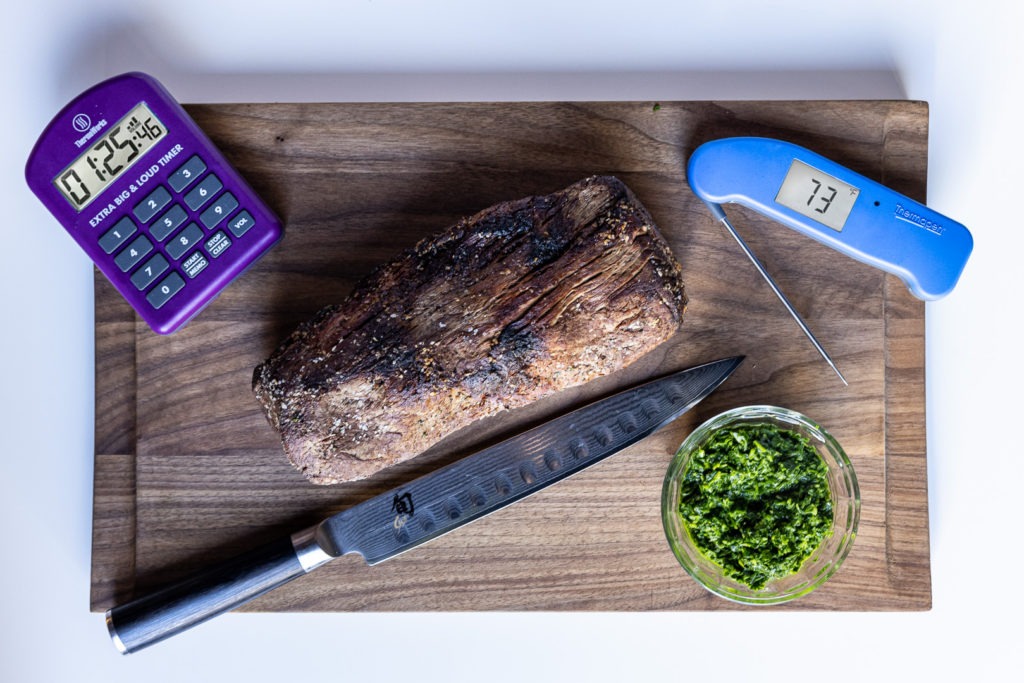
A Show-Stopper
Not only is grilling in a salt crust a delicious way to prepare a beef tenderloin, it gives a very impressive presentation to a festive occasion. You get to crack open a charred packet in front of all of your guests to reveal a perfectly cooked tenderloin. You will need to sacrifice a dish towel to the effort, but it’s a great showy dish to prepare for holidays or whenever you have company coming over. And you won’t believe how delicious.
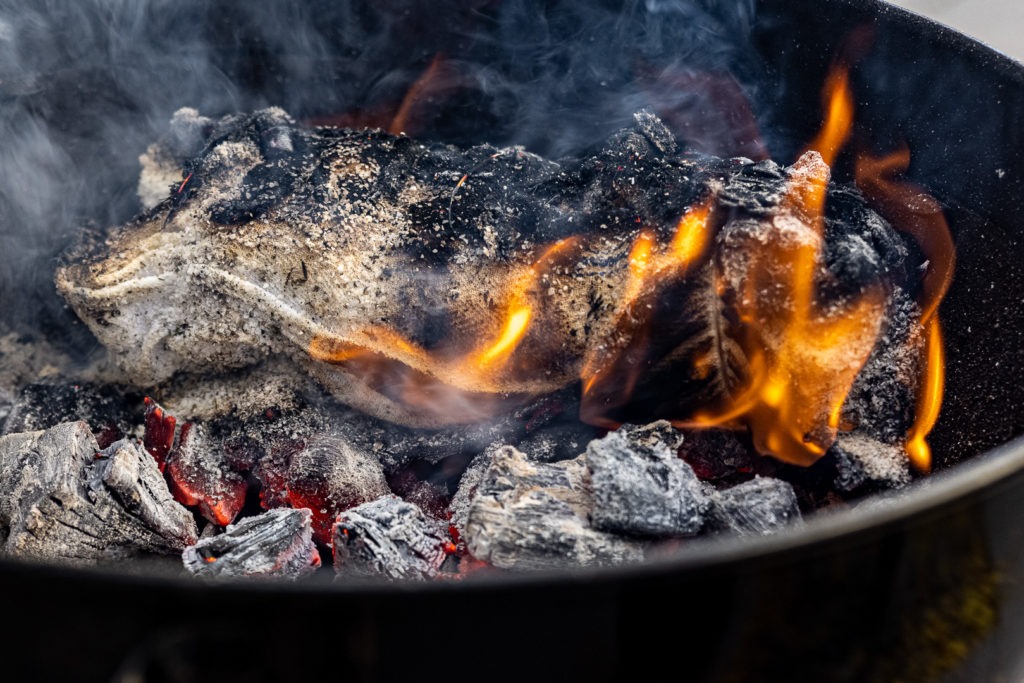
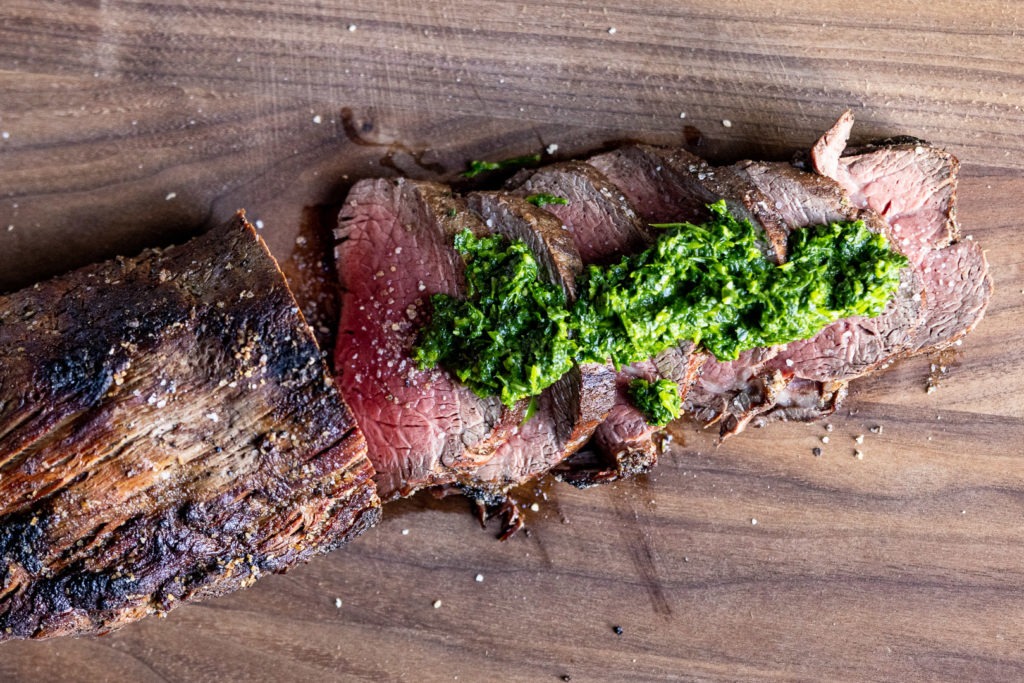
Why Cook in a Salt Crust?
Cooking in a salt crust is an ancient method that has been used by many different cultures. But what is it about this salt enclosure that makes it a desirable way to cook meat?
1. Thermodynamic Properties
Grill roasting or oven roasting in a salt crust creates a sort of kiln, or an oven within an oven that roasts your meat. Some traditional recipes call for burying meat or vegetables in dry salt, while others pack the food in a salt paste held together with water or egg whites. Either way, the meat is surrounded by a mineral that affects its thermal properties in unique ways.
Heat Conduction: Salt molecules are made up of sodium ions and chlorine ions and are highly conductive. Packing salt around meat is a very efficient way to transfer heat energy around the entire surface of the meat and radiate it inward.
Heat Retention: Salt is also excellent at absorbing and retaining heat. Surrounding the meat entirely with salt creates an environment that cooks efficiently and evenly from edge to edge.
Insulator: At the same time, the salt is a barrier around the meat that protects it from the searing heat of direct contact with the coals.
Moisture Retention: Lastly, a salt crust around a cut of meat acts as a barrier to evaporation of water from the muscle fibers. Inside the salt kiln, the meat is steamed with its own juices—very little moisture is lost.
By packing foods such as fish, meats, or potatoes in a mound of salt, you ensure that the outer surface of the coked food doesn’t reach the same surface temperatures as it would if uncovered, leading to a less extreme gradient of doneness. —Cooking for Geeks, Jeff Potter
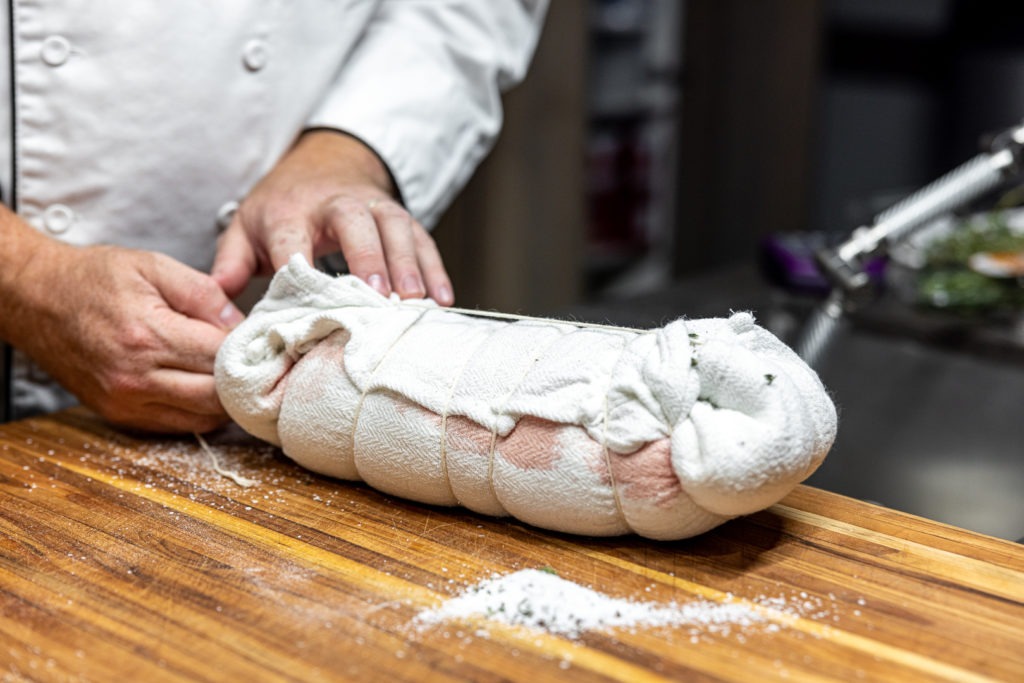
2. Flavorful and Juicy with a Tender Texture
All of the moisture, volatile flavors, and aromas remain inside the salt crust with this method, creating a finished product that remains remarkably juicy, with very intense, pure flavors. Many salt crusts have fresh herbs and other aromatics mixed into them. The inward direction of the heat transfer infuses the meat with the flavors in the crust.
The salt crust helps even out the heat transfer that would otherwise be rather extreme in this cooking situation, so compared with cooking caveman-style directly on the coals, there are less extreme temperature gradients. The more even heat transfer of a salt crust means less overcooked meat and fantastic texture as long as your critical temperatures are tracked correctly with accurate thermometry.
3. Quicker Roasting
With powerfully intense heat moving inward from all sides of the salt-encased meat, it cooks faster—about 1/3 the time of regular grill roasting without the salt insulation.
Intense carryover from salt-crust grilling
Be warned, however, that the carryover cooking factor (the meat’s internal temperature rise after being removed from the heat source) is exaggerated with this cooking method. After being removed from direct heat, the “salt kiln” can retain and insulate the energy already in the muscle fibers of the meat very well rather than letting it dissipate into the air. We tried a few different methods of salt-crusted cooking with different types of meat in our demo kitchen, and we saw carryover cooking increase the internal temperature of the different cuts of meat as much as 31°F (17°C) while resting! (31°F [17°C] carryover was seen with a pork loin that was oven-roasted in an egg white salt crust, and rested in the salt crust for 20 minutes.)
Rather than pulling our roast at 125°F (52°C) as we would if we were slow-roasting the tenderloin in the oven, we’re going to aim for a pull temp of only 105–110°F (41–43°C)! The roast will carry over in its salt sarcophagus up to a lovely medium-rare. Use a fast and accurate thermometer like Thermapen® ONE to get the temperature just right. Believe me, when you temp this meat, you’ll want to get it temped fast!
Salt Crusting: Salt as a Tool, Not an Ingredient
But Wait! Won’t My Tenderloin Be Too Salty?
Not if done correctly. Keep reading…
With salt crust roasting, the salt’s purpose is to create an exterior shell that conducts, retains, and insulates heat throughout the cook. To ensure that your meat isn’t too salty, don’t salt it ahead of time.
Cook the meat immediately after packing or wrapping in salt. The meat will start cooking over the high heat before the salt has enough time to dissolve and penetrate the surface of the meat. After the meat is cooked and you crack and brush the salt away, the meat will be seasoned, but not salty.
Meat allowed to rest for eight hours in a salty crust before cooking loses a ton of its weight through osmosis, as its juices get pulled into the salt and eventually evaporate during cooking. Cut the crust open on a long-salted roast, and there’s a good half inch of space all around it that used to be occupied by meat. It also comes out inedibly salty. Make sure you cook the beef immediately after wrapping it. —Kenji Lopez-Alt, The Food Lab, Serious Eats
In other words, you cover it in salt right before cooking, ad it comes out just right. Leave it too long and it will certainly get too salty.
Note on searing and flavor:
Salt-crust roasting produces wonderful doneness and texture, but it does not develop a traditional sesared crust on the outside of the meat. We seared our tenderloin in a cast iron pan over high heat before encasing it in salt to give it a good savory crust in the final presentation.
This method of cooking a beef tenderloin in salt wrapped in a towel directly over coals is so much fun! ANd the results are exquisite. Give it a try this season. Get the towel, get the salt, get the grill going, and get your Thermapen. It will be delicious every time.
Print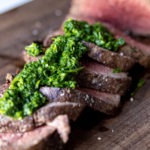
Grilled Tenderloin in a Salt Crust Recipe—Lomo al Trapo Recipe
Description
Lomo al Trapo: a Colombian method of cooking a beef tenderloin surrounded by salt, rolled in a cotton towel, and cooked directly on hot coals.
Adapted from Kenji’s recipe for Lomo al Trapo.
Ingredients
- 1 Center-cut of beef tenderloin, about 3 lb.
- 3 lb. kosher salt
- 1 Tbsp ground black pepper
- Fresh herbs: rosemary, oregano, and/or thyme
Equipment
- 1–2 kitchen towels (100% cotton or linen)
- Butcher’s twine
Instructions
- Light one chimney full of charcoal. Prepare the salt-crusted tenderloin while coals are heating.
- Trim tenderloin of excess fat and silverskin.
- Mince the herbs and combine them—but not the pepper—with the salt. Mix to distribute them evenly.
- Lay your kitchen towels out on a work surface. If your loin is on the long side, lay two towels, overlapping, with the long side facing you. If it is shorter, one towel should suffice, with the short side facing you.
- Take double handfuls of herbed salt and let it drain from between your hands, hourglass-style, as you trace your way around the towels, leaving a 2-inch border.
- Fill in this rectangle with salt the same way. Sprinkle pepper over the surface of the salt.
- Note: I found this part of the cook to be very satisfying and fun.
- Preheat a heavy skillet over high heat. Add a little oil to the pan and sear the tenderloin well on all sides.
- Place the tenderloin on the bed of salt at the edge closest to you. Lift up the towel and, holding it tightly against the tenderloin, roll the loin forward, pushing the towel and salt with it.
- Continue to roll. When the towel makes almost one full circle around the meat, pull the front lip of it back so that the salt is in full contact all the way around the meat.
- Fold the sides of the towel in and continue rolling.
- When the entire roll is ready, tie it every inch or two with butchers twine, being sure to secure the ends of the towel on the sides.
- Pour hot coals onto the bottom grate of a kettle grill, smoker, or barrel-style cooker. Do not put the top grate in place.
- Place the wrapped tenderloin directly onto the hot coals! Cover grill partially and cook for 10 minutes.
- The bundle will almost certainly begin to flame, or it may not. No need to be alarmed if it does.
- Use tongs to flip the meat and cook for an additional 10 minutes.
- The towel may burn through, exposing the meat. It’s ok if that happens! You can brush the ash off when the meat is done.
- Spot-check the roast’s internal temperature with a Thermapen® ONE (you may need to forcefully puncture the towel with your Thermapen’s probe). Pull the tenderloin from the coals once the lowest internal temperature found reaches 105–110°F (41–43°C).
- Crack the package open (cut open with kitchen shears if it will not crack open), remove the tenderloin and brush off excess salt.
- Allow the roast to rest, exposed, for 5–10 minutes.
- Transfer roast to a carving board, slice, and serve with some of the roasted/charred smoky salt and salsa fresca or chimichurri sauce. Enjoy!


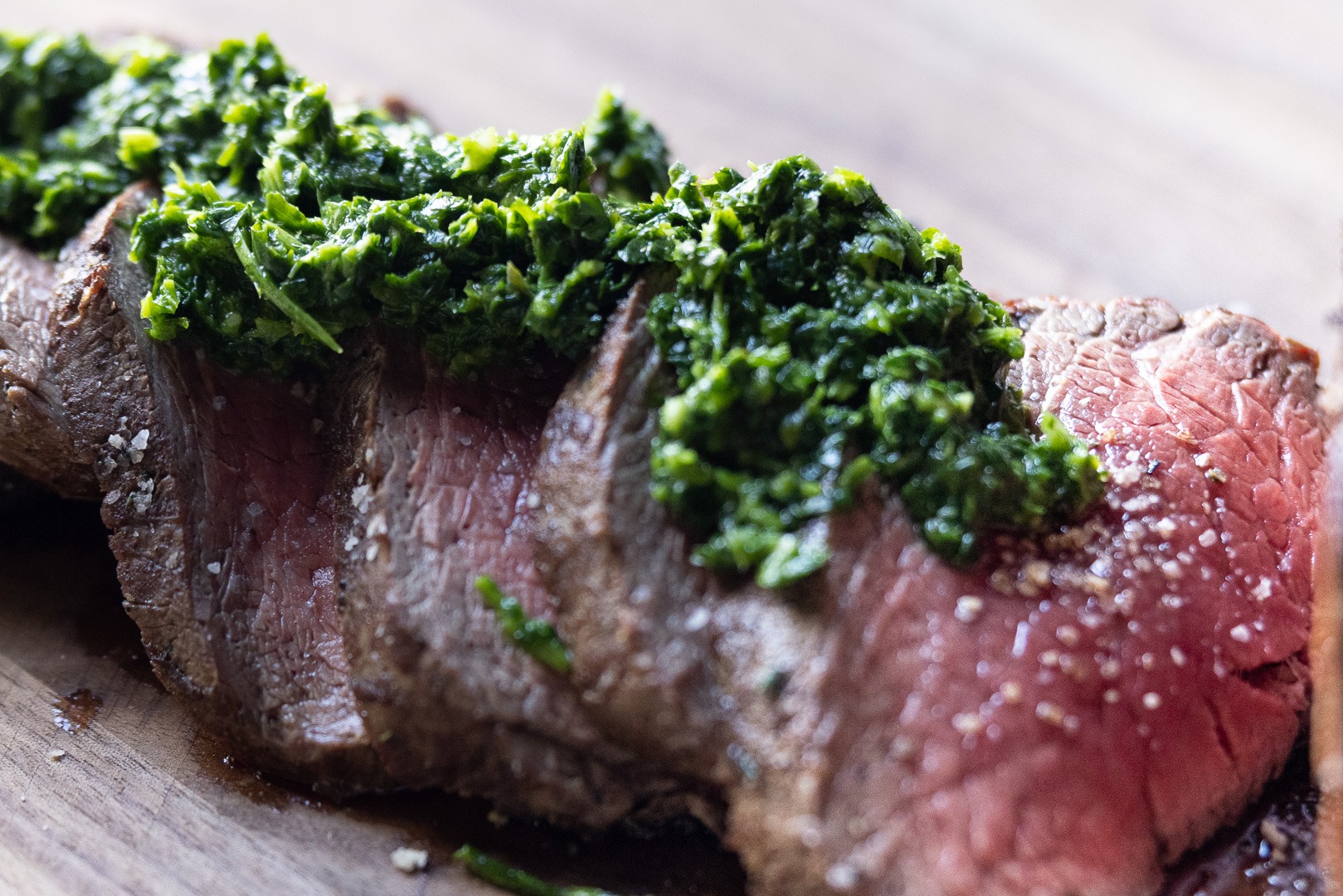
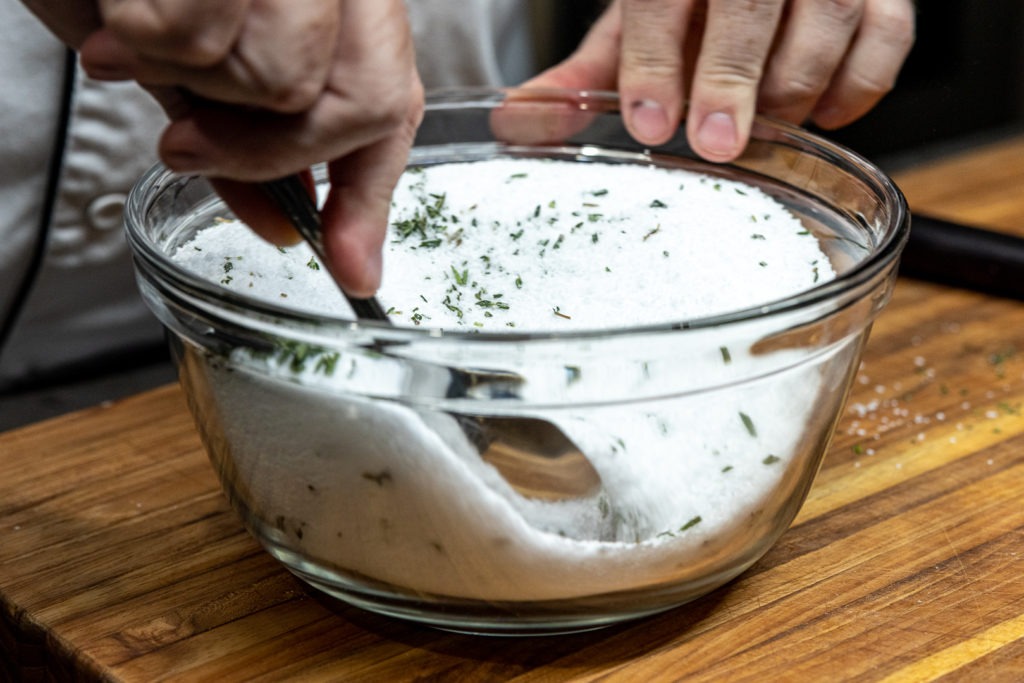
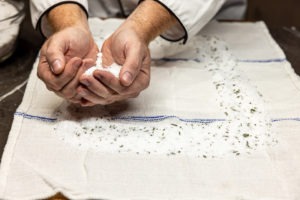
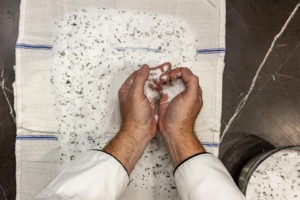
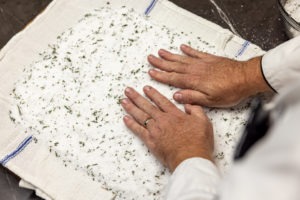
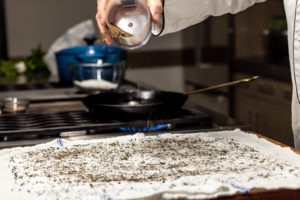
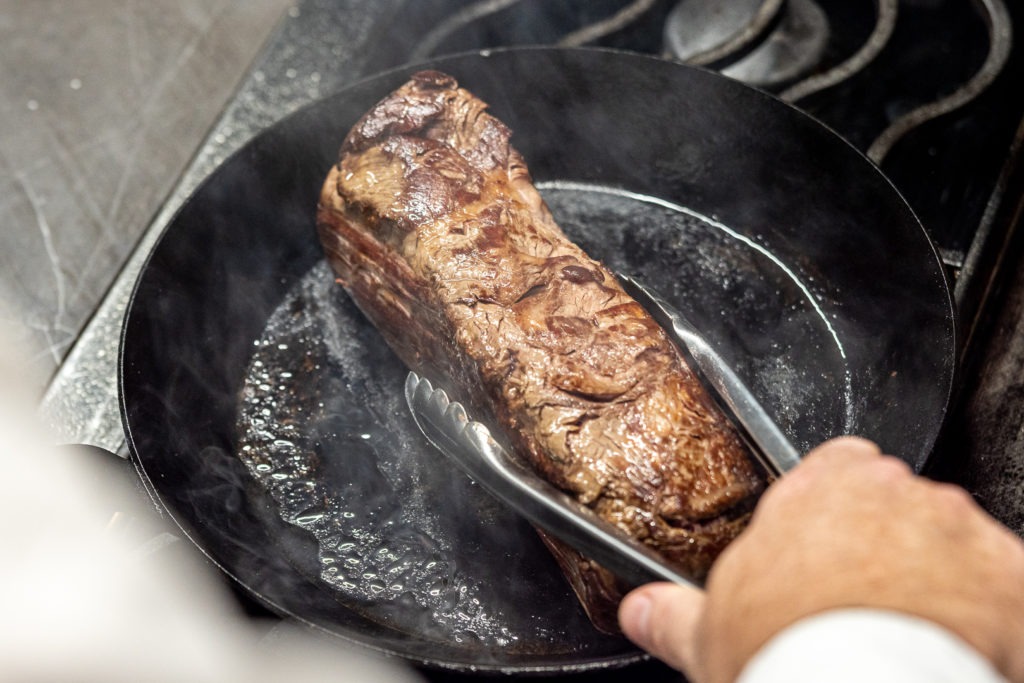
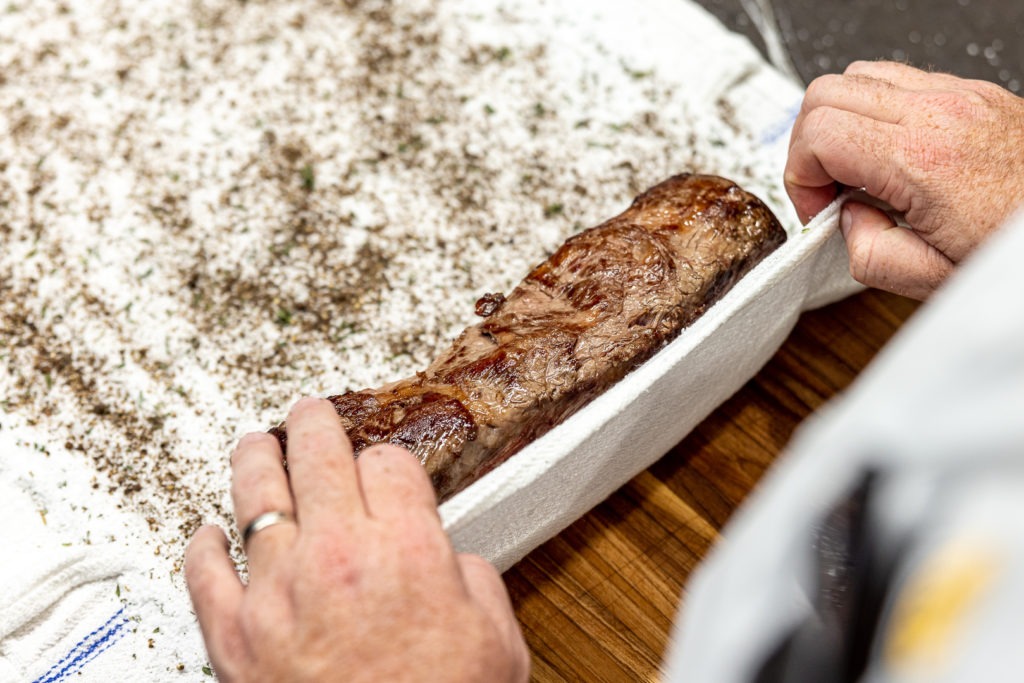
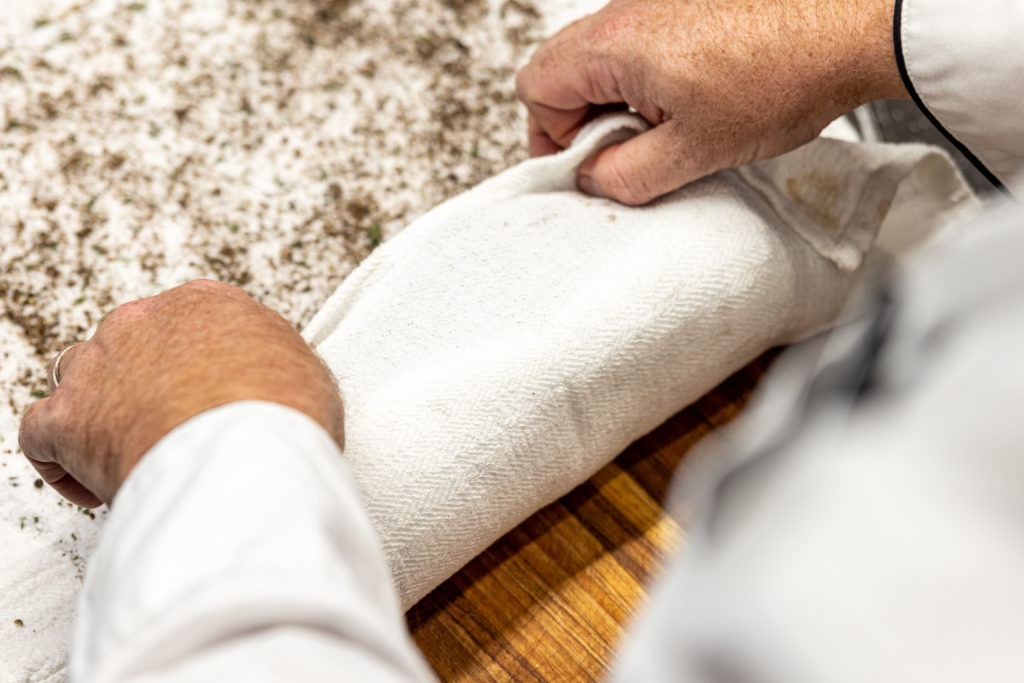
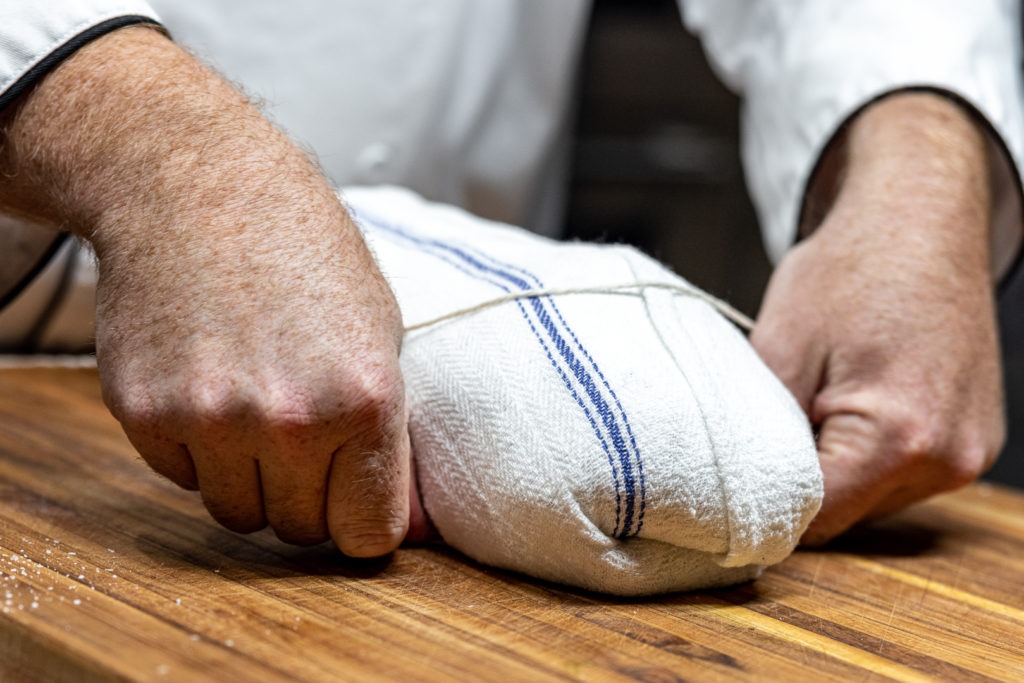
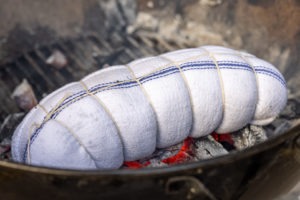
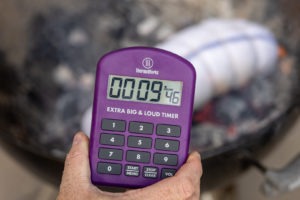
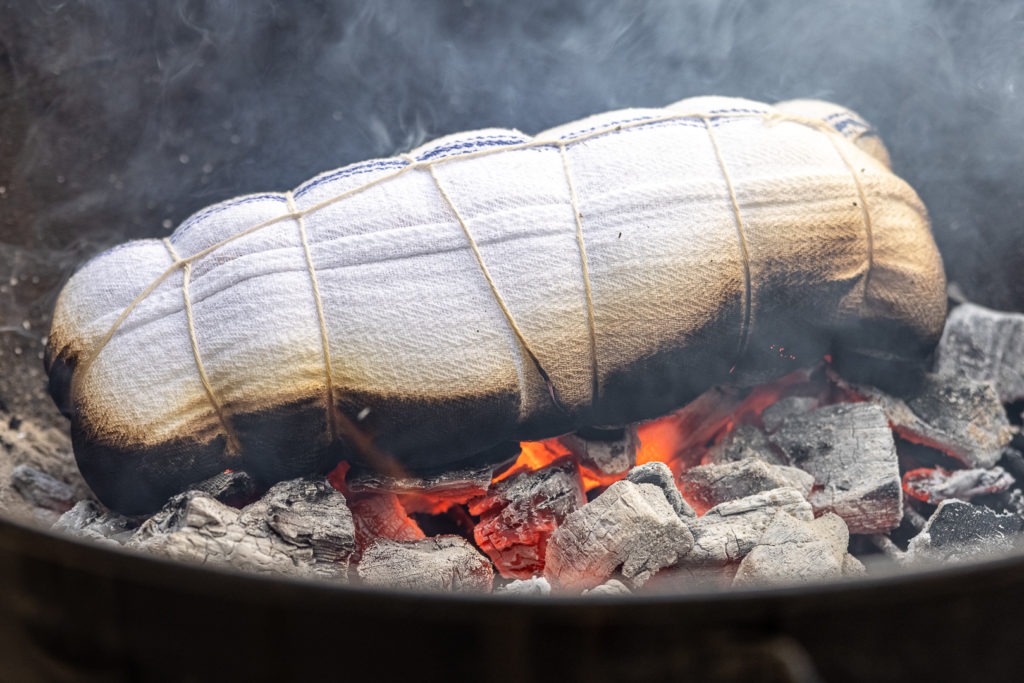
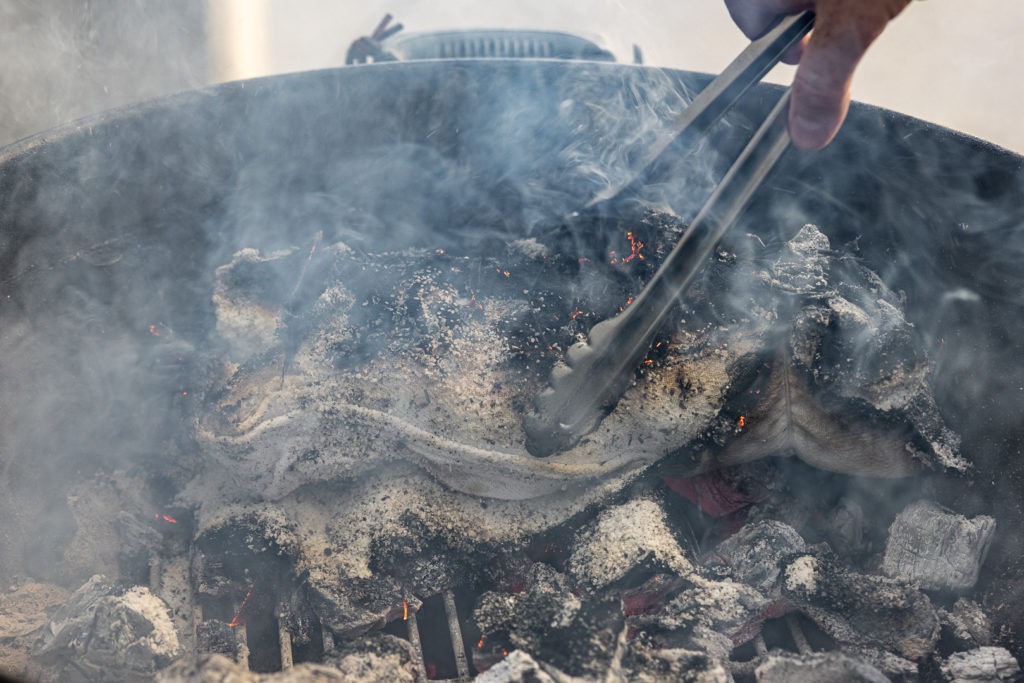
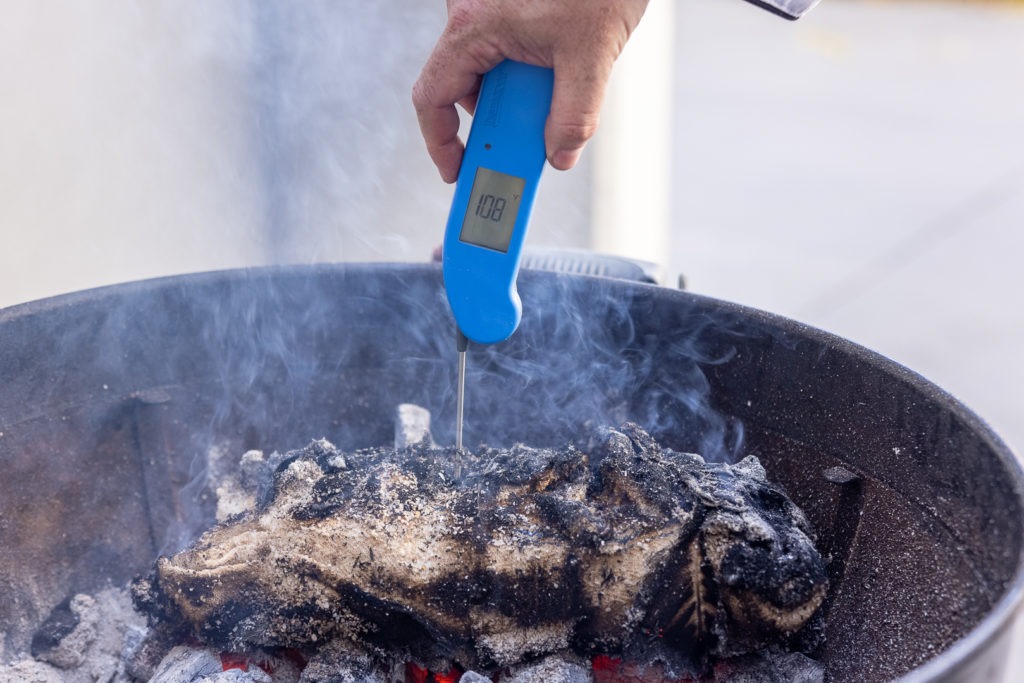
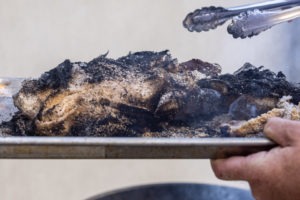
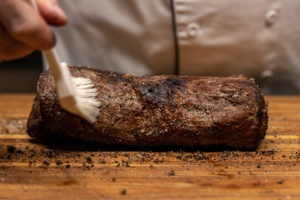
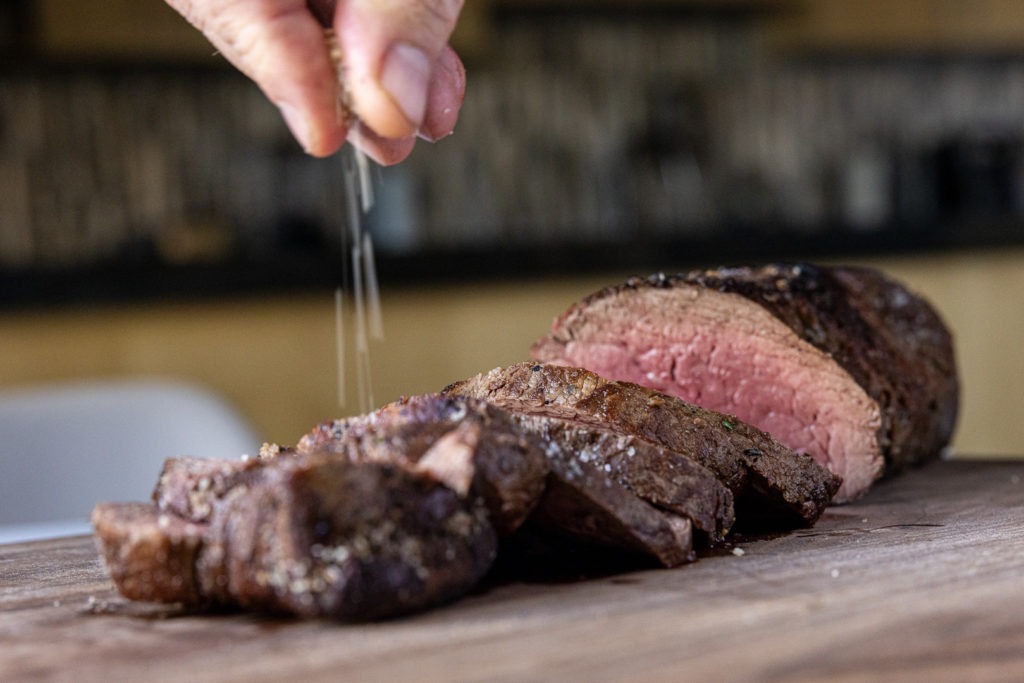

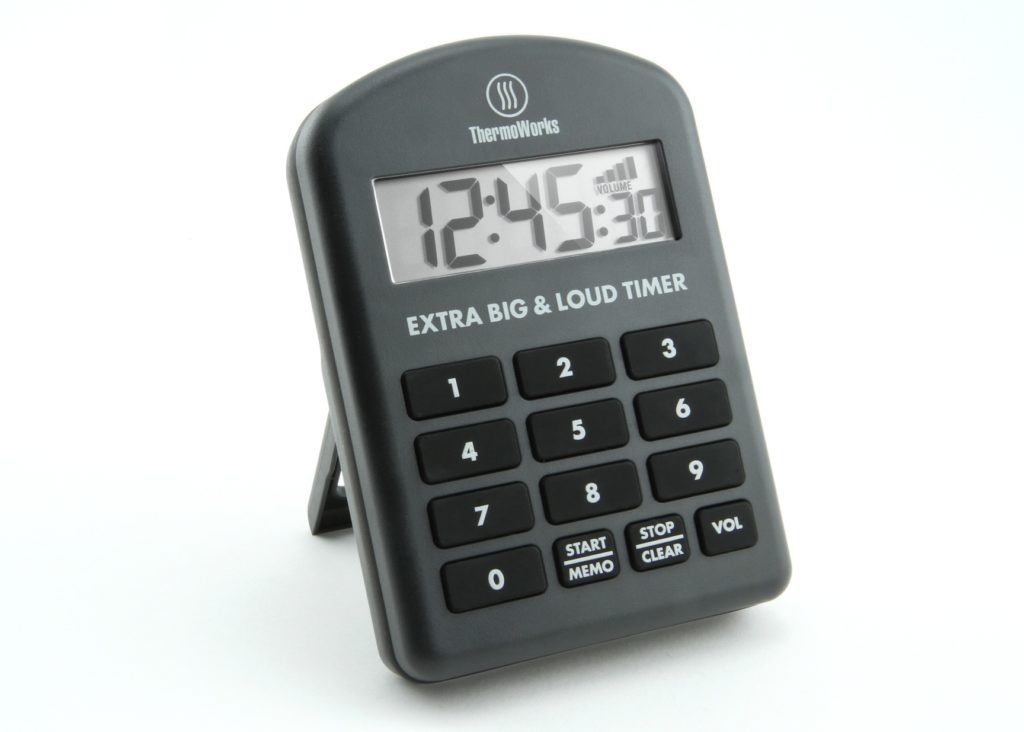
Although I have never tried this myself, I have seen an eye-of-the-round done, a couple of times. Kosher salt was used to encrust the roast. It was then wrapped using wax paper. Then placed directly on the hot coals for 15 minutes, flip 90º for 15 minutes, again flip 90º, for 15 minutes, and yet again to finish the last quadrant flip 90º for another 15 minutes. Remove from coals, remove salt and clean up, cover loosely and let sit for 10-15 minutes then cut and serve.
JPMcSR,
This would be a great method for an eye of round roast! Thank you for your comment.
-Kim
Can you use cheese cloth instead of a kitchen towel on the LOMO AL TRAPO recipe?
JLA,
Yes! Layers of cheesecloth can be used if you’d rather not sacrifice a kitchen towel. It takes about 4 layers of cheesecloth to create an effective salt crust seal, and can end up costing more than a kitchen towel for that reason. Either way, this is a fun method with delicious results.
Thanks,
-Kim
What a great idea! I had forgotten about a salt “oven”. Thanks for the suggestion. Since my spouse and I have traveled all over the world during his Marine Corps days, we were able to eat some fantastic foods everywhere. This is one of my favorites and I totally forgot about it. I was in cooking school when I met my spouse and let me tell you, eating became our passion. Such wonderful memories. Thank you again!
Vicky,
So glad this post was able to spark some fond memories! This method yields results so much more flavorful and juicy than you may expect, and it’s fun! Thank you for your comment.
-Kim
To Whom It May Concern:
What do you think about using a couple of layers of moistened cheesecloth instead of a towel to cook your salt crusted tenderloin?
Please respond at your earliest convenience and thank you for your time.
Sincerely,
P. Grzesik
noodlepig@att.net
N
Paul,
Yes, layers of cheesecloth can absolutely be used in place of a kitchen towel. It takes about 4 layers of cheesecloth to have a good enough seal on the salt layer, and can wind up costing more than 1 kitchen towel. If you try cheesecloth, let us know how it goes!
Thanks,
-Kim
If you said that there could be as much as 31° carry over cooking, cooking the tenderloin to 125° (medium rare yes?) would bring the final temperature to over 150° (otherwise known as cardboard).
Did you intend to post the final temp so high, or were you looking at that as a post-carryover temp? It’s especially odd since the Kenai recipe that you referenced only has you take it to 90° before pulling it from the coals.
Justin,
Thank you for pointing out that the 31°F rise in temperature seemed a bit off while reading the post. We saw that dramatic temperature increase with a pork loin that had been oven roasted in an egg white bound salt crust. And the pork loin was allowed to rest in the salt crust for about 20 minutes. As we went through different projects in our demo kitchen, what ended up working best for us differed slightly from Kenji’s original recipe. If you give this method a try, let us know how it goes!
Thanks,
-Kim
Can you use a probe to ensure you don’t overshoot the temp?
I like the idea of that, but I’d be VERY worried about burning out the probe. If you could manage to keep the probe transition from being over the coals, it might be ok.
Do you think it would be possible to use a gas grill instead of charcoal? What if I removed the cooking grates and put the tenderloin directly on the flavorizer bars (Weber Genesis grill)?
I think that could work. Be sure that it’s well pre-heated. I might try with a cheaper cut of meat first, just to be on the safe side.
What about using aluminum foil for the wrap?
An interesting idea! I would give it a try, but maybe try it on an eye of round first. I suspect it will cook more quickly because it will retain steam in the foil, but I’m really not sure.
Once you make a complete roll and the meat is completely covered with salt, how do you continue? Do you keep pulling the towel back or does the towel get buried between layers of salt?
Once you’ve gone around once you don’t keep pulling the towel out. Let the towel go around at that point.
What would you need to do to this recipe if you used an oven instead of hot coals?
Wrap it up the same way, but crank your oven up high, 450°F. It may take longer to cook that way, as there isn’t the same kind of direct, contact, extreme heat.
I do not have a charcoal grill any longer. I have a Weber three burner grill and a very expensive convection oven. Can I use one of these instead? if so, what adjustments to the recipe would I make?
I would use a cheaper cut to try some of these methods out, but I think you could put the packet right on the burners of the grill (not on the grates). I cannot vouch for that! In the oven, I’d just crank it to max temp and go for it. In that case, you could certainly use a leave-in probe. I’d pull at a slightly higher pull temp, because you’ll be cooking at a lower temp than right on the coals.
How would you cook this in a Big Green Egg? Any advice?
Just the same! Don’t have too big a fire going, and just nestle it right down on the coal bed.